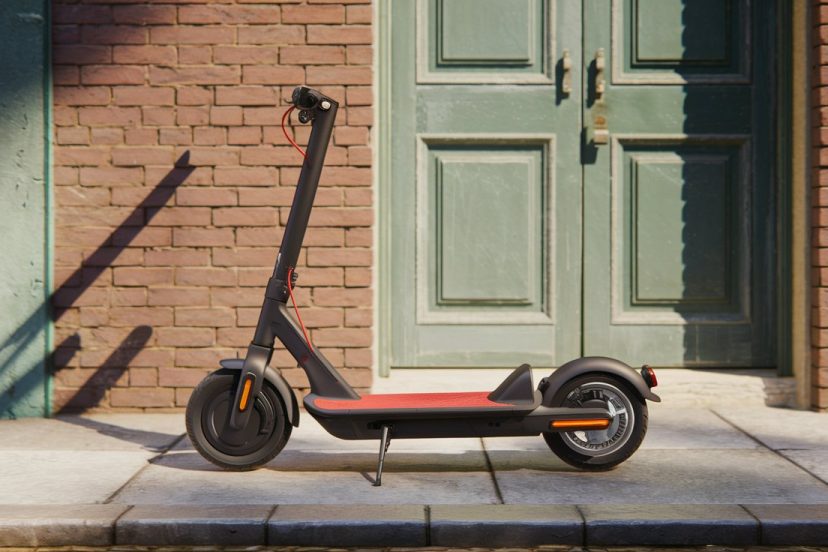Insurance for E-Scooter Riders: Do You Need It?
*We may earn a commission for purchases made using our links. Please see our disclosure to learn more.
E-scooters are a fun, convenient, and eco-friendly way to get around the city. Electric scooters are used for commuting to work, running errands, and just riding. Electric scooters offer freedom and efficiency in the user’s life. But that is not a problem; there is always a question: Do you need insurance for an e-scooter?
As e-scooters increase in usage, there are increasing worries about accidents, theft, and legal responsibility. What happens if you are involved in an accident? Will your personal insurance pay for the damage or treatment of the injured? Are there special insurance products for e-scooter riders?
I have researched this extensively and have also used e-scooters. In this guide, I will explain everything you need to know about e-scooter insurance, from the type of coverage you can get to the legal requirements for e-scooter riders. In this article, I will explain whether or not you need insurance, what it covers, and how to select the right insurance policy for your protection and that of your scooter.
Let’s get started and find out how e-scooter insurance can help you relax when riding.
Key Takeaways
- E-scooter insurance is not always compulsory but is advisable to ensure financial security in case of an accident.
- Varieties of insurance protections are available for e-scooter drivers. Primary thoughts are personal injury and liability protection.
- The need for insurance depends on the area, the frequency of use, and the level of risk one is willing to take.
- The cost of the insurance is usually less than the cost of the potential accidents.
- This means that while e-scooters may not always need insurance, it is still advisable to get coverage to avoid incurring significant expenses in case of an accident.
Understanding E-Scooter Insurance: What You Need to Know
Electric scooters have changed the urban transportation in the last few years. At first it was just a trend, and now it is considered as a normal means of transport for millions of people across the world. Many cities have welcomed these small and environment friendly vehicles as a way of solving traffic congestion and conservation of the environment. They are now a common sight on campus, in downtown areas and other congested places due to their convenience and flexibility.
The e-scooter market has been on the rise globally and experts predict that the market will keep on growing in the future. Some of the factors that have led to the growth of the market include population density, environmental concerns, and development in the battery and scooter technology. As people look for new ways of moving about, the e-scooters have become a good option for short distances. Companies like Bird and Lime have also helped in the enhancement of the use of e-scooters through making them easily accessible to the public without the need of owning them.
But with the development comes the risks and issues including legal and financial issues that many people who ride a scooter may not even consider. The biggest issue for e-scooter riders is insurance and whether they are insured at all, and to what level, in case of an accident, theft, or liability.
Why Insurance Matters
E scooters may seem harmless personal vehicles but they can pose serious risks for the riders and pedestrians. All it takes is a moment, a pothole one did not see coming, a pedestrian one did not expect to cross the street, a driver who is not paying attention, or a slick surface to cause an accident and suffer an injury or damage property. There are many challenges for e scooter riders in urban environments including uneven pavement, unpredictable traffic patterns.
Financial Risks of an Uninsured Accident
Consider the potential financial implications of an uninsured accident:
- Medical Bills – A single emergency room visit can cost anywhere from $1,000 to $3,000, and that’s before considering follow-up treatments, physical therapy, or lost wages due to injury.
- Property Damage – If you accidentally hit a parked car, damage someone’s property, or crash into a storefront, you could be responsible for thousands of dollars in repairs.
- Liability Costs – If you collide with a pedestrian and they decide to take legal action, legal fees and compensation can quickly add up. Even if you are not at fault, defending yourself in court can be expensive.
- Theft and Vandalism – E-scooters are an easy target for theft, especially in major cities. If your scooter gets stolen or damaged, replacement costs can be high, especially for high-end models.
Are E-Scooters Covered by Existing Insurance Policies?
One common misconception is that homeowners, renters, or auto insurance will automatically cover e-scooter incidents. However, most traditional insurance policies exclude motorized vehicles, leaving riders unprotected in case of an accident. Some cities or states may even require liability coverage for privately owned e-scooters.
Because of these gaps in coverage, many insurance providers now offer specialized e-scooter insurance policies, covering:
- Liability protection (if you injure someone or damage property)
- Collision coverage (for damage to your scooter)
- Medical payments coverage (to help with injury-related costs)
- Theft and vandalism protection
Making an Informed Decision
Before hopping on your e-scooter, it’s essential to evaluate your risks and insurance options. Whether you ride occasionally or use your e-scooter daily, having the right coverage can save you from unexpected financial burdens. Check local regulations, review your existing policies, and consider purchasing e-scooter-specific insurance for added peace of mind.
As the popularity of e-scooters continues to rise, being proactive about insurance is the best way to protect yourself, your ride, and others around you.
Types of E-Scooter Insurance Coverage
E-scooter insurance is essential for protecting riders from potential financial risks associated with accidents, injuries, and theft. Here’s a closer look at some of the most crucial types of coverage:
1. Personal Liability Insurance
This is perhaps the most critical type of coverage for e-scooter riders. Personal liability insurance protects you if you accidentally cause injury to someone else or damage their property while riding.
For instance, if you swerve to avoid an obstacle and inadvertently knock down a pedestrian, this insurance can cover their medical expenses, rehabilitation costs, and potential legal fees.
Why Personal Liability Insurance is Important
Real-world scenarios highlight the necessity of this coverage:
- Pedestrian Accidents: You accidentally run into a pedestrian at a crosswalk, causing them to fall and suffer a broken arm. Without liability insurance, you could be responsible for their hospital bills, lost wages, and even pain and suffering claims.
- Property Damage: You lose control of your scooter and crash into a parked car, denting the door or breaking a side mirror. Liability insurance can cover the cost of repairs.
- Legal Protection: If someone sues you after an accident, liability insurance can help cover legal representation and settlement costs, saving you from potentially thousands of dollars in out-of-pocket expenses.
Since e-scooters share space with pedestrians, cyclists, and vehicles, liability insurance provides a safety net in case of accidents.
2. Personal Injury Protection (PIP)
Medical expenses can skyrocket quickly after an accident. Personal injury protection (PIP) covers your medical treatments, rehabilitation costs, and potentially lost wages if you’re injured while riding your e-scooter.
Why Personal Injury Protection Matters
Unlike liability insurance, which covers damages to others, PIP ensures that your own medical bills are covered, regardless of fault. This is especially useful if you:
- Don’t have health insurance or have a high deductible.
- Sustain injuries that prevent you from working temporarily.
- Need ongoing rehabilitation, such as physical therapy.
Common E-Scooter Injuries and Their Costs
E-scooter accidents can cause a range of injuries, from minor scrapes to serious trauma. Here’s how much common injuries can cost without PIP:
- Fractured wrist or arm: $5,000 – $15,000 (including X-rays, surgery, and rehabilitation).
- Head injuries or concussions: $10,000 – $50,000 (hospital stay, MRIs, neurology follow-ups).
- Severe road rash or lacerations: $2,000 – $10,000 (emergency care, stitches, and infection treatment).
Even with a minor accident, medical costs can add up quickly, making PIP a valuable investment.
3. Property Damage Coverage
E-scooters are not cheap, with prices ranging from $300 to over $2,000, depending on the model. Property damage coverage can help repair or replace your e-scooter if it’s stolen, damaged in an accident, or suffers from mechanical failures.
What Property Damage Insurance Covers
- Accidental Damage: If you crash into a pole or curb, causing severe damage to the scooter.
- Vandalism: If someone deliberately damages your scooter, such as slashing tires or breaking the handlebar.
- Theft Protection: If your e-scooter is stolen while parked outside your office, home, or a public area.
- Accessory Coverage: Some policies also cover helmets, smartphone mounts, locks, and other add-ons.
Why It’s Essential
Without property damage coverage, you might have to pay out-of-pocket for repairs or replacements, which can be costly. For instance:
- Battery replacement: $150 – $600
- Motor repair: $100 – $500
- New frame or structural damage repair: $200 – $800
For high-end scooters, a replacement may be the only option, making property damage coverage a crucial safeguard.
Factors Affecting Insurance Needs
Location Matters
Insurance requirements and availability differ significantly between cities and countries. Urban areas with established e-scooter sharing programs might have different insurance landscapes compared to smaller towns or rural regions.
In some cities, rental e-scooter companies provide basic insurance coverage. However, if you own a personal e-scooter, you’ll likely need to secure your own insurance policy. Local regulations can also impact insurance requirements, so it’s crucial to stay informed about your specific area’s rules.
Usage Patterns
How and where you use your e-scooter impacts your insurance needs. Daily commuters facing heavy traffic might require more comprehensive coverage compared to weekend riders in less congested areas. Consider factors like:
- Frequency of rides
- Typical riding environment (urban streets, bike lanes, campus paths)
- Distance traveled
- Time of day you typically ride
How to Obtain E-Scooter Insurance
Homeowners or Renters Insurance
Surprisingly, some existing homeowners or renters insurance policies offer limited coverage for e-scooters. Check with your current insurance provider to understand what’s included and if you need additional protection.
Many people don’t realize that their current insurance might already provide some level of protection. A quick phone call to your insurance agent can clarify your existing coverage and potential gaps.
Specialized E-Scooter Insurance
Several insurance companies now offer specialized policies designed specifically for e-scooter riders. These policies are often more comprehensive and tailored to the unique risks associated with electric micromobility.
When shopping for specialized insurance, compare:
- Coverage limits
- Deductible amounts
- Specific inclusions and exclusions
- Cost of premiums
- Customer service reputation
Cost Considerations
The cost of e-scooter insurance varies widely depending on multiple factors, including coverage level, location, riding habits, and insurer policies. On average, premiums range from $100 to $500 annually, but can be higher for riders in urban areas with heavy traffic or higher accident rates.
Factors That Affect E-Scooter Insurance Costs
- Coverage Type & Limits – A basic liability-only policy costs less than a comprehensive plan covering theft, damage, and medical expenses.
- Riding Frequency – If you use your e-scooter daily for commuting, your insurance rate may be higher than for occasional riders.
- Location & Risk Level – Insurance costs may be higher in busy metropolitan areas with dense traffic, higher accident rates, and frequent theft incidents.
- Scooter Type & Value – More expensive e-scooters with advanced features (e.g., high-speed models or luxury brands) may require higher premiums.
- Rider History – Your personal accident history, claims record, and even driving history (if linked to your insurance profile) can influence costs.
Why E-Scooter Insurance is Worth the Investment
While paying $100 to $500 annually may seem like an unnecessary expense, consider the potential out-of-pocket costs if you’re uninsured:
- Medical bills from a moderate injury: $10,000 – $50,000
- Legal fees if sued for property damage or injury: $5,000 – $20,000
- Scooter replacement costs after theft or severe damage: $300 – $2,000+
Insurance acts as a financial safety net, preventing unexpected expenses that could be far more costly than the premium itself. It’s not just an expense, it’s an investment in peace of mind.
Legal Landscape
The laws surrounding e-scooters and insurance requirements are still evolving. Some regions have introduced specific regulations, while others rely on existing transportation and liability laws to govern e-scooter riders.
Are You Legally Required to Have E-Scooter Insurance?
Unlike cars and motorcycles, most jurisdictions do not yet mandate e-scooter insurance, but some cities and states are beginning to implement requirements. Here’s a breakdown:
- Places That Require Insurance – Some European countries (e.g., Germany, France) require third-party liability insurance for private e-scooters. Certain U.S. states, like Illinois and New York, are considering similar mandates.
- Rental Scooter Regulations – In cities where shared e-scooters (like Lime, Bird) are regulated, the rental company may have insurance that covers third-party liability, but this coverage does not protect you as the rider.
- Helmet & Licensing Laws – Some areas require helmets for riders under a certain age or limit where e-scooters can be ridden (e.g., bike lanes vs. sidewalks).
How to Stay Legally Compliant
- Check Local Laws – Stay updated on your city or state’s regulations regarding e-scooter insurance, helmet laws, and permitted riding areas.
- Verify Your Coverage – Even if insurance isn’t required, consider at least liability coverage to protect yourself from potential lawsuits.
- Understand Rental Scooter Policies – If using a shared e-scooter, read the rental agreement to understand what is and isn’t covered in case of an accident.
The Future of E-Scooter Insurance Laws
As e-scooters become more popular, expect stricter regulations regarding insurance coverage. Policymakers may:
- Mandate liability insurance for privately owned e-scooters.
- Require rental companies to offer optional personal injury coverage for riders.
- Introduce licensing or registration systems for high-speed e-scooters.
Staying informed about changing laws ensures you remain protected and legally compliant when riding.
Conclusion
It is a personal choice to get e-scooter insurance or not as it depends on many factors. Though not always compulsory, it provides peace and a financial safety net in a world of increasingly chaotic city traffic. First, consider your riding behavior, the laws in your area, and the level of risk you are comfortable with.
It is the little thing that could end up saving you thousands of dollars in the future. As e-scooters are gradually being adopted in cities all over the world, it is more crucial than ever to be protective of your investment.
Frequently Asked Questions
1. Is e-scooter insurance mandatory?
Insurance requirements vary by location. While not universally mandatory, many experts recommend having some form of coverage to protect yourself financially.
2. Can I get insurance if I use a rental e-scooter?
Rental companies often provide basic insurance, but coverage is typically limited. Consider supplemental personal insurance for comprehensive protection.
3. How much does e-scooter insurance cost?
Annual premiums range from $100 to $500, depending on coverage level, location, and individual risk factors.
4. Does my current health insurance cover e-scooter accidents?
Some health insurance policies might provide limited coverage, but it’s essential to review your specific plan and understand potential gaps.
5. What should I look for in an e-scooter insurance policy?
Prioritize policies that offer personal liability, injury protection, and property damage coverage. Compare multiple providers and read the fine print carefully.




